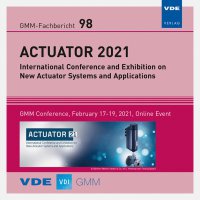Effect of hydrogen solution on the Young’s modulus of rolled tungsten
Conference: ACTUATOR - International Conference and Exhibition on New Actuator Systems and Applications 2021
02/17/2021 - 02/19/2021 at Online
Proceedings: GMM-Fb. 98: ACTUATOR 2021
Pages: 4Language: englishTyp: PDF
Authors:
Yamane, Ryoya; Tokiwa, Ren; Tsuchiya, Hirotarou; Uchida, Helmut Takahiro (Course of Mechanical Engineering, Graduate School of Engineering, Tokai University, Kanagawa, Japan)
Kaneko, Arata; Tonegawa, Akira (Department of Physics, School of Science, Tokai University, Kanagawa, Japan)
Takimoto, Toshikio (Course of Science and Technology, Graduate School of Engineering, Tokai University, Kanagawa, Japan)
Adachi, Tomomi (Department of Precision Engineering, Tokai University, Kanagawa, Japan)
Abstract:
Recently, the nuclear fusion power generation has attracted attention as a future power generation method. Tungsten is considered to be a promising candidate for divertor materials because of its excellent wear resistance, heat resistance, and low hydrogen gas solubility. However, the possibility of hydrogen embrittlement caused by hydrogen atoms dissolved in tungsten during the process has been pointed out, thus, it is important to evaluate its physical properties exposed to a hydrogen atmosphere. Furthermore, since tungsten is also used as a structural material for diverters, it is necessary to investigate changes in its mechanical properties in an environment where hydrogen is present. Although it is known that the mechanical properties of metals such as Young's modulus change depending on the temperature conditions, investigations about those dependency of hydrogen solution have been done not sufficiently yet. The change in Young's modulus is extremely important in designing, preventing the resonance phenomenon. However, since the Gorsky effect occurs in a metal that undergoes elastic deformation, careful evaluation is required for evaluation of mechanical properties of metals with hydrogen solution. In this work, we focused on the vibrating reed method as a non-destructive method for measuring Young's modulus and aimed to evaluate the change in mechanical properties of pure tungsten plate of industrial purity, applying electrochemical hydrogen loading technique.


